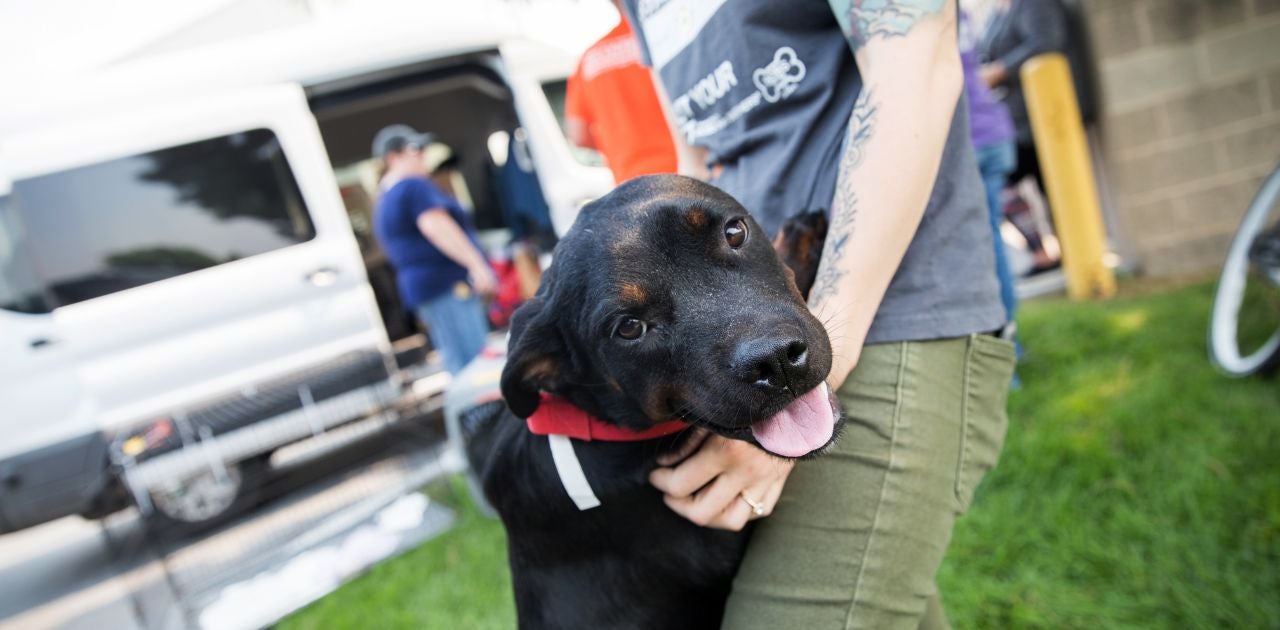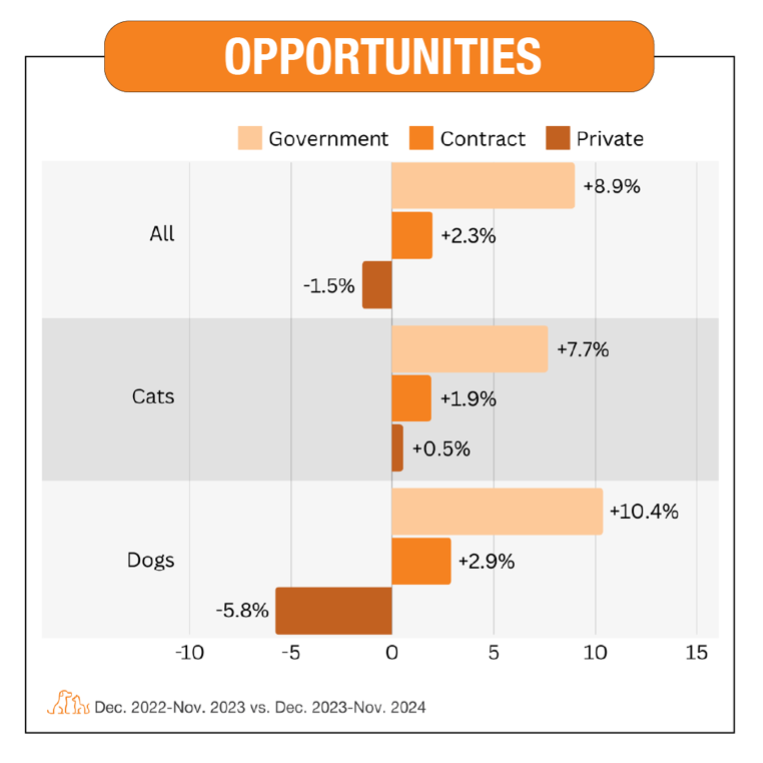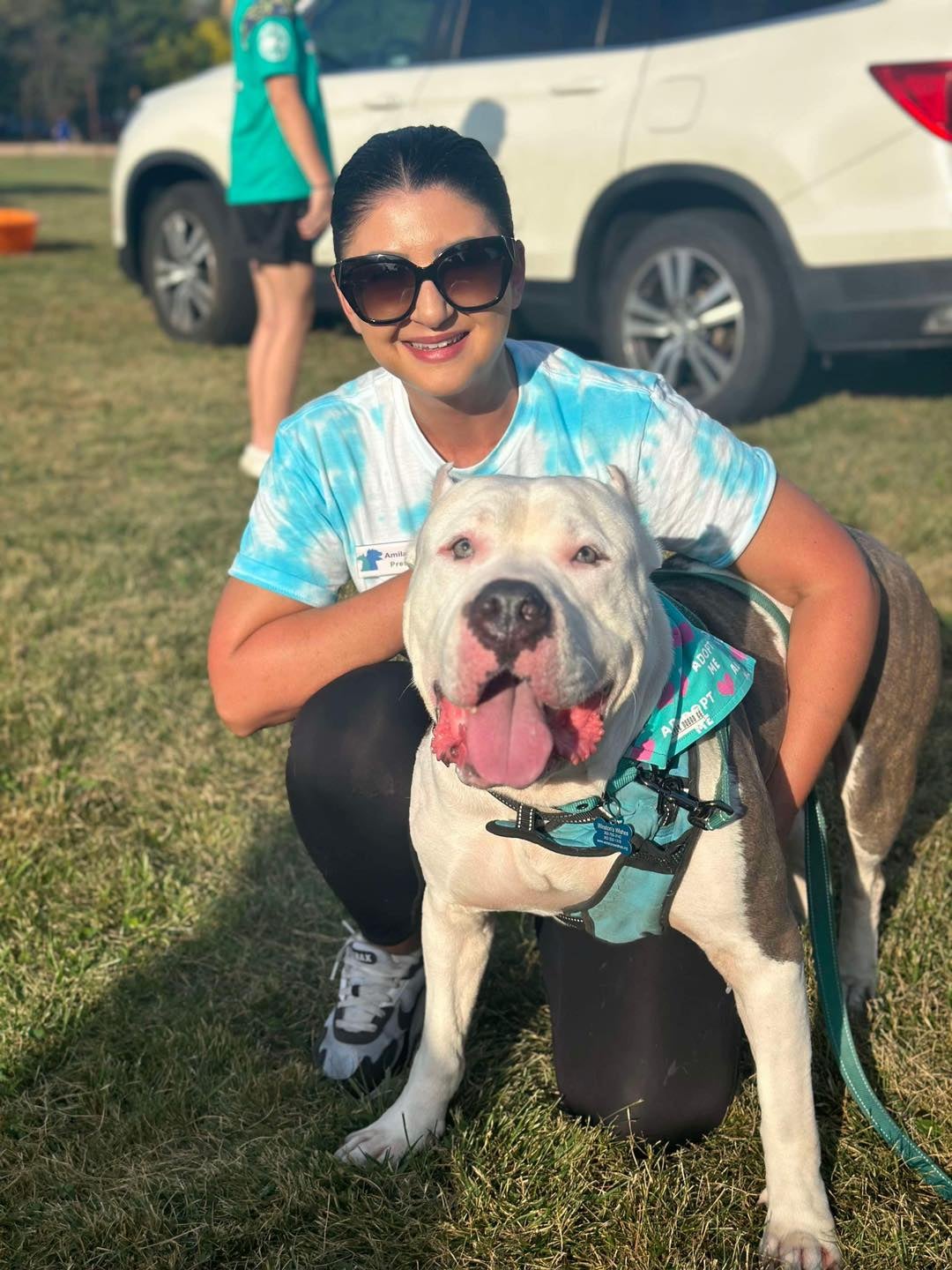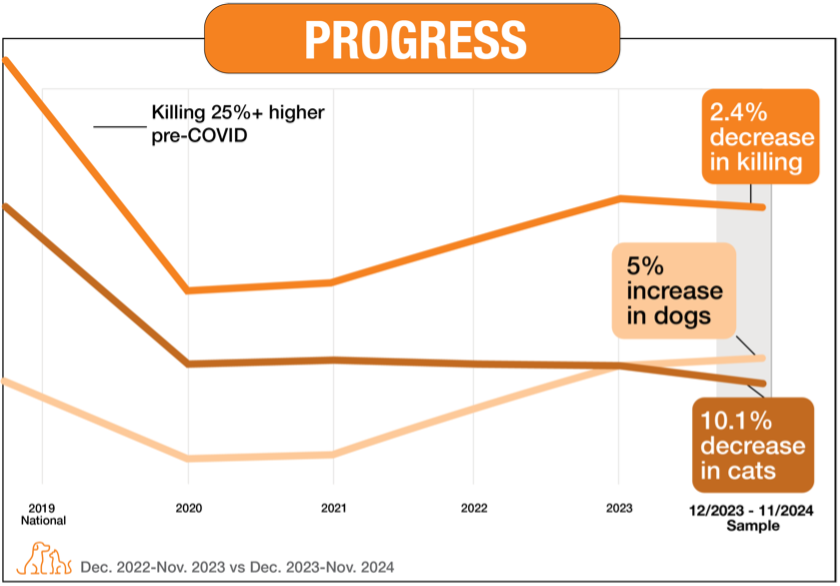
Preliminary 2024 Shelter Data Shows Increased Adoptions, Dogs in Crisis, Path Forward Toward No-Kill
Preliminary 2024 Data Report
While there is no such thing as a crystal ball, we have the next best thing: a preliminary glimpse at potential 2024 over 2023 data trends based on shelter data. Best Friends has been examining data from the 688 organizations* that have reported through November 2024 and the trends identified may be suggestive of the industry’s progress last year.
As 2025 gets underway, it’s important to recognize that we wrapped 2024 on a positive note, and for that, we should all take a moment to celebrate! Trends for the last 12 months of reported data (December 2023 – November 2024) are encouraging, and while a significant need remains, the path to achieving no-kill nationwide is becoming increasingly clear.
Adoptions are trending upward – for cats and dogs
Let’s start with adoptions, which have continued trending upward, increasing by 3.9% overall. The adoption progress varies by agency type, with municipal agencies leading the way with an 8.9% increase in adoptions, followed by private shelters with contracts up 2.3%. Unfortunately, adoptions by private shelters without contracts went down by 1.5%.
3.9% ▲
increase in adoptions overall
Cat adoptions have increased by 3.4%, again driven by municipal agencies, which are up 7.7% compared to 1.9% for private shelters with contracts and 0.5% for private shelters without contracts.

Even though the day to day may feel overwhelming, dog adoptions have increased by 4.7%! This increase has also been driven by municipal agencies which are up 10.4% in dog adoptions, followed by private shelters with contracts at a 2.9% increase. An outlier once again, private shelters without contracts saw a 5.8% decrease in dog adoptions this year, which threatens the overall progress made for dogs throughout the interwoven animal welfare ecosystem.

Milwaukee Area Domestic Animal Control Commission
Milwaukee Area Domestic Animal Control Commission, one of our sample shelters, proves that often small operational changes can lead to big results. One specific area of focus has been around their feline lifesaving efforts. The team at MADACC has moved their cats out of the lobby and repurposed one of their meeting spaces as the new feline room. This allows cats to be separated from newly incoming animals, reducing stress and illness. Additionally, the team at MADACC has started implementing daily enrichment to increase cats’ mental stimulation and keep them happier and healthier. These efforts combined to help MADACC increase cat adoptions by 54% — an increase of 1,158 feline adoptions.
Dogs are also getting a boost, with MADACC now opening up their kennels more to rescues and potential adopters; before, people couldn't just walk through. With these efforts, dog adoptions went up by 577 in 2024 (52%). This shelter has also been working to get more animals back to their owners — whether that is through their veterinary team offering acute procedures then letting the owners reclaim, waiving fees, or finding other solutions. Each change, big or small, leads to more pets getting out of the shelter and into a home!
Photo courtesy of the Milwaukee Area Domestic Animal Control Commission
Killing in shelters is down for the first time since the pandemic

The most exciting trend of 2024 is that the number of animals killed in shelters decreased for the first time since 2020, partially due to the increase in adoptions. Since the 2020 pandemic, the number of animals killed in shelters has steadily increased, but from December 2023 to November 2024, we saw a 2.4% decrease. This is a huge win for our industry, and it’s extremely encouraging to see the numbers trending in our favor once again.
Based on 12-month sample data collected from December 2023 through November 2024, there has been a 10.1% decrease in cats killed in shelters – that means the number of cats killed in shelters is now at the lowest point in history! Not only are shelters increasing adoptions, but the continued embrace of community cat and return-to-field programs have helped cat lifesaving tremendously.
10.1% ▼
decrease in cats killed in shelters
5% ▲
increase in dogs killed in shelters
Unfortunately, more work needs to be done to save dogs in shelters. Despite the increase in dog adoptions, the number of dogs being killed in shelters is still increasing. In our sample, the number of dogs killed was up 5%. The increase in adoptions isn’t enough to keep up with the 2.3% rise in dog intake and the slight rise in return-to-home (1.9%) and transfers (1.7%) are not significant enough to close the gap.
It’s remarkable how quickly the fortunes of dogs and cats in shelters may be changing. As recently as 2022, 2 cats were killed for every 1 dog killed in shelters. Looking back at 2024, this sample sees that statistic flip, with 3 out of every 5 animals killed in a shelter being a dog. As data continues to come in, we will discover if this is a national trend, or a localized experience.

Nebraska Humane Society
The Nebraska Humane Society team made big changes in a short amount of time, by using data, proven strategies, and a commitment to lifesaving. Every department has had some kind of change, with two programs standing out: their community cat program and their dog enrichment team. Dog playgroups have changed how dogs are assessed and have been a game changer for how dogs are marketed for adoption. The shelter’s community cat program is having a huge impact in the shelter, as well. Combined, the two programs led to 1,169 fewer animals being killed at the shelter and the shelter recently achieving the 90% no-kill benchmark.
Photo courtesy of the Nebraska Humane Society
How to close the lifesaving gap
There’s still much work to be done.
It’s no coincidence that the number of animals being killed in shelters has decreased as adoptions have increased – we have always known that about half the pets that enter shelters are adopted. In our 2024 sample, that percentage was 48.9% for dogs and 62.3% for cats.
After all, in May 2024 an analysis of Best Friends’ data determined that if just 6% more people choose to adopt versus purchasing their pets, we would end the killing of dogs and cats in our nation’s shelters.
But how do we make that increase in adoptions a reality? As we saw in 2023, theoretically, if we were able to return adoption rates to pre-pandemic levels, our national lifesaving gap would be nearly closed. We build on the positive trends we saw in 2024 and increase our focus on open adoption practices to make 2025 a record-setting adoption year for all types of organizations.
The Best Friends Network made a significant investment in expanding open adoption best practices in 2024 by sponsoring the June 2024 Bring Love Home Challenge, which encouraged organizations to implement open adoptions best practices.
1
During the challenge, participating groups averaged an 11.4% increase in adoption and foster placements over June 2024, but the excitement doesn’t end there!
2
A three-month follow-up with all participating organizations revealed that they saw a 7.6% increase in adoptions between June and September 2024, while non-participating organizations saw only a 3.7% increase in adoptions during the same period.
3
The numbers are even more striking for rescue organizations: A three-month follow-up with participating foster-based rescues revealed that they saw an incredible 24.6% increase in adoptions between June and September 2024, while non-participating foster-based rescues saw a 1.7% decrease in adoptions during the same period.
These findings indicate that by breaking down barriers and engaging a more diverse community of support, shelters and rescues can dramatically increase their lifesaving.
To leverage these findings, Best Friends recommends that groups (especially private shelters without contracts) commit to open adoptions by examining their adoption practices with our open adoptions self-assessment. This includes actions like considering the expansion of their open hours (particularly hours outside of the normal work week) and translating their adoption materials into Spanish and other languages common in their community. For more information on how to implement these best practices, download our Open Adoptions and Foster Practices Guide.
A commitment to these best practices could also help unclog a significant bottleneck we’re continuing to see as many larger private shelters without contracts have failed to increase adoptions over the last year. Historically, these organizations have played a crucial role as an outlet for transports from less resourced shelters. But their resulting inability to take in as many animals has put more pressure on the rural and southern municipal shelters that have relied on them in the past. This exacerbates ongoing capacity challenges and the post-pandemic decline in transports.
This continued decrease in dog transport reinforces that the sustainable pathway forward relies on increasing other live-outcome options like:
1
Adoption for both cats and dogs
2
Return-to-home (RTH) for dogs
3
Community cat programs for cats
Unfortunately, return-to-home for dogs continues to be relatively stagnant. With the increase in microchips and QR-code tag usage, as well as the prevalence of technology platforms like social media and Petco Love Lost, the opportunity is right in front of us to see this outcome type increase over time.
To test this theory and drive RTH, Best Friends Network held a Return-to-Home Challenge in September of 2024, which pushed participating organizations to pilot two new best practices for a full month. During that period, participating shelters:
1
Increased RTH in-field by 170% compared to September 2023
2
88% of groups indicated that they would continue these practices
To learn how to dramatically increase your organization’s RTH efforts, visit our Return-to-Home Challenge Debrief for playbooks and resources, and consider signing up for our 2025 Paws in the Field Challenge.
*This representative sample is from 688 shelters, of which 46% are municipal shelters, 29% are shelters with a government contract, and 25% are private shelters without a government contract.
We expect to see some variances from the final national data set that will be released later this spring, but these projections are still a useful tool for strategic planning purposes.